A relationship of contrary magnetic characters
This Valentine’s day, we travelled to the foothills of the French Alps for an experiment at instrument ID24-ED of the European Synchrotron Radiation Facility (ESRF). Our subject of study is Nd2ZnIrO6, a perovskite crystal in which two rather different magnetic species are forced to cohabit in the same unit cell.
The large magnetic moments of neodymium originate from 4f electrons that are highly localized and well shielded from their surroundings. By contrast, the 5d states of iridium are highly delocalized and interact with each other over a longer range. But then again, the magnitude of Ir moments in Nd2ZnIrO6 amounts to no more than about one tenth of the Nd magnetism. In effect, our sample synthesis collaborators at the Leibniz Institute IFW have forced two polar opposites into a complicated magnetic relationship: A strong-minded introvert and a gullible extrovert.
Image credit: an article on LinkedIn
We are interested in how this relationship will pan out - for example, it would be exciting if one endows the other with one of its properties (like magnetic anisotropy). It could even be that completely new phenomena emerge from this strange marriage. In previous experiments, we have already learned that the behaviour depends very much on the context: If we cool the material below 16.5 K, the (small, but well-connected) Ir moments take the lead in forming a long-range ordered state - but Nd duly follows with the same antiferromagnetic arrangement. However, when a magnetic field is switched on, the large (but isolated) Nd moment take the driver’s seat. At a critical field, they choose to switch to a different magnetic arrangement (a metamagnetic transition), and here it seems that Ir is the obedient follower.
Crystal structure of Nd2ZnIrO6 determined by our collaborators at the Leibniz Institute IFW, Dresden
But as it turns out, this behaviour also depends sensitively on the direction of the applied field, and the situation is not completely settled (the moments are not fully aligned) up to extremely strong magnetic fields. Our goal this week is to track the magnetisation of the Ir sublattice while we use a 30-tesla magnet to force the Nd moments to point along different directions. The method of choice is x-ray magnetic circular dichroism (XMCD) at the iridium L x-ray absorption edges.
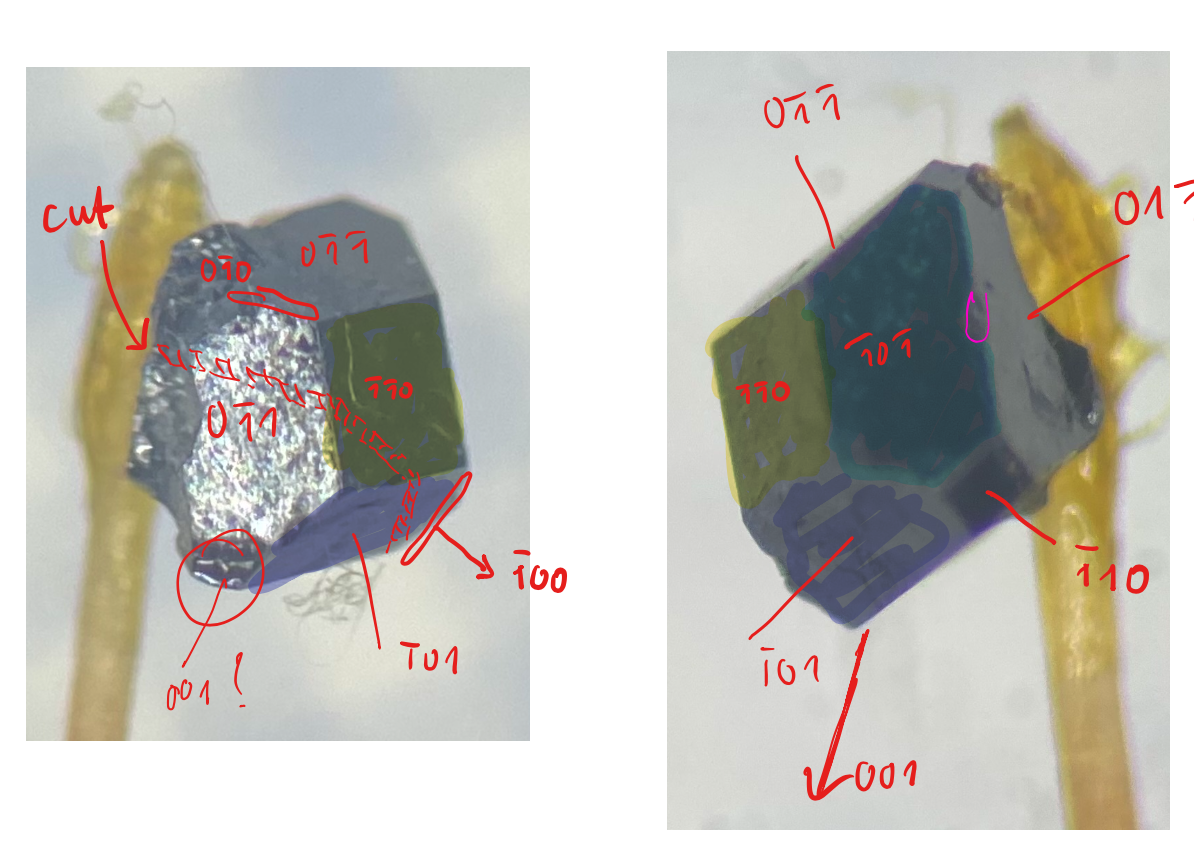
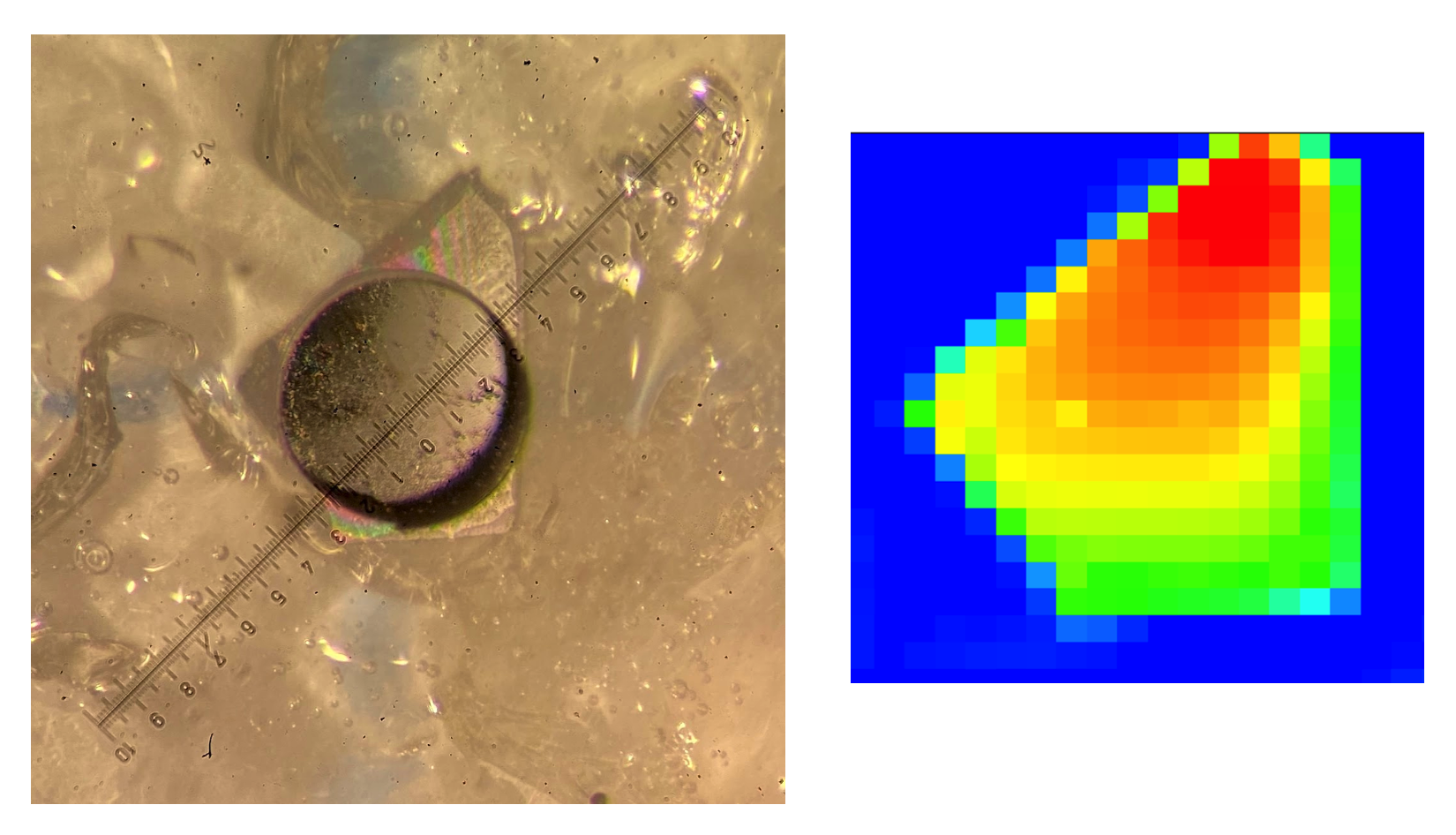
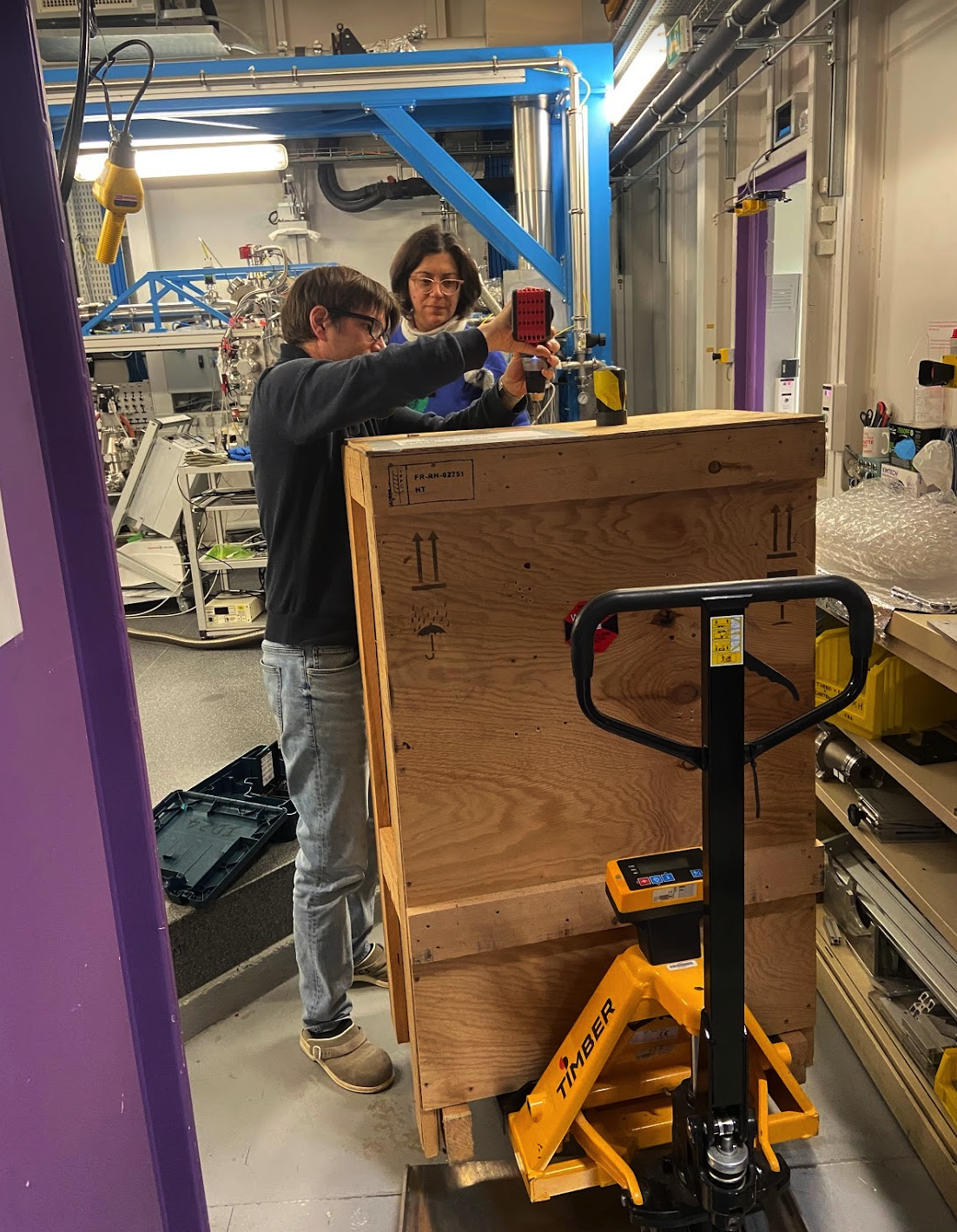
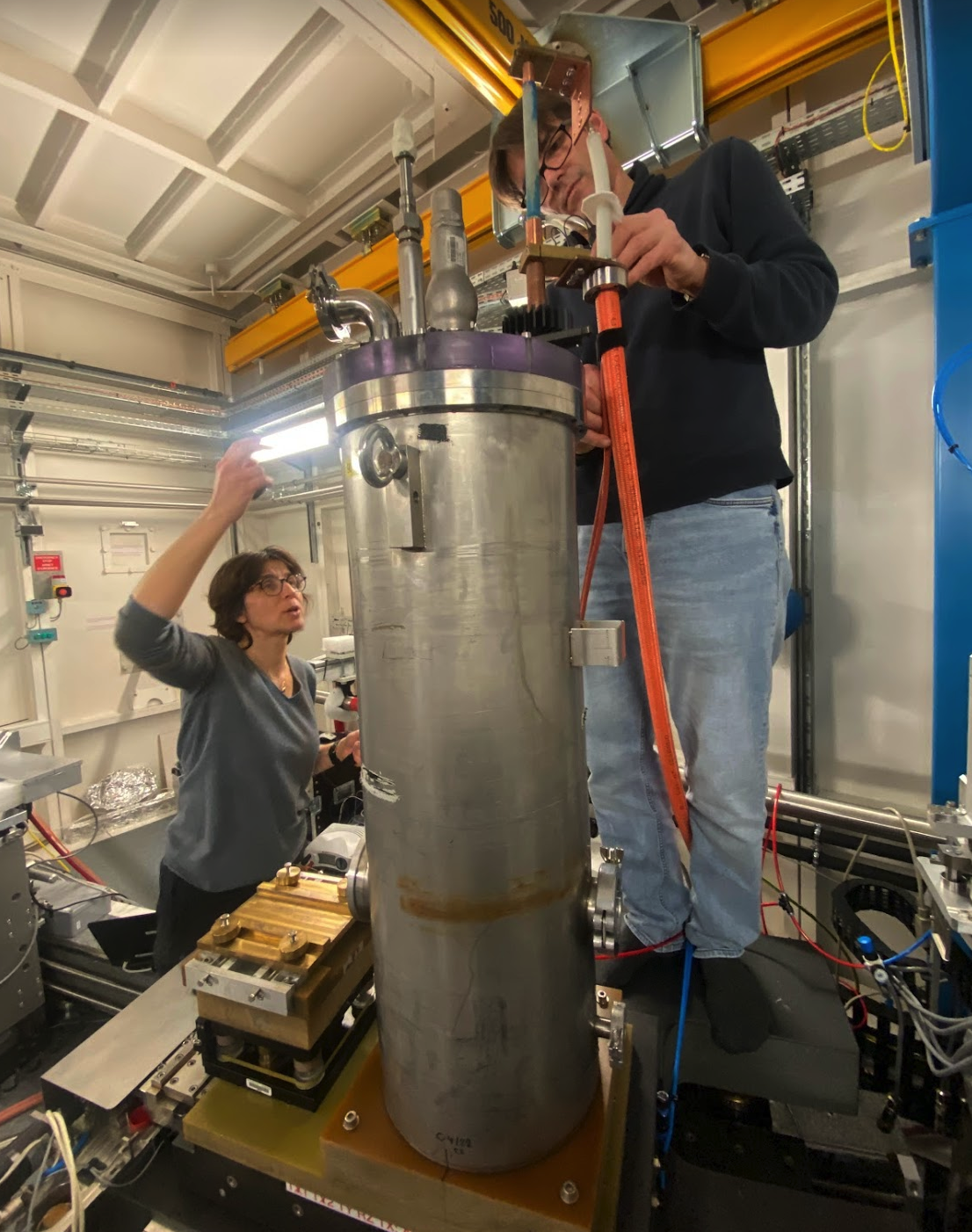

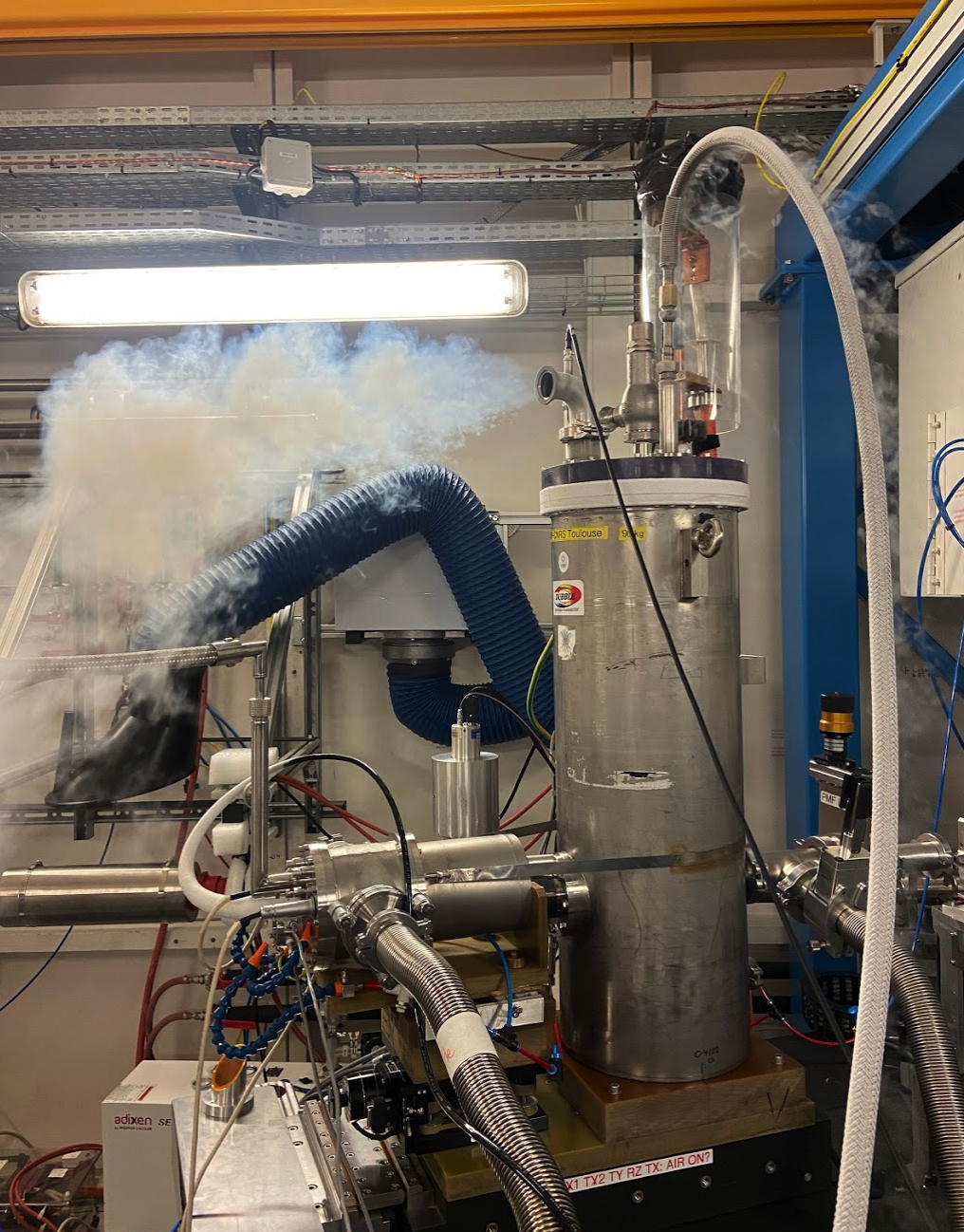
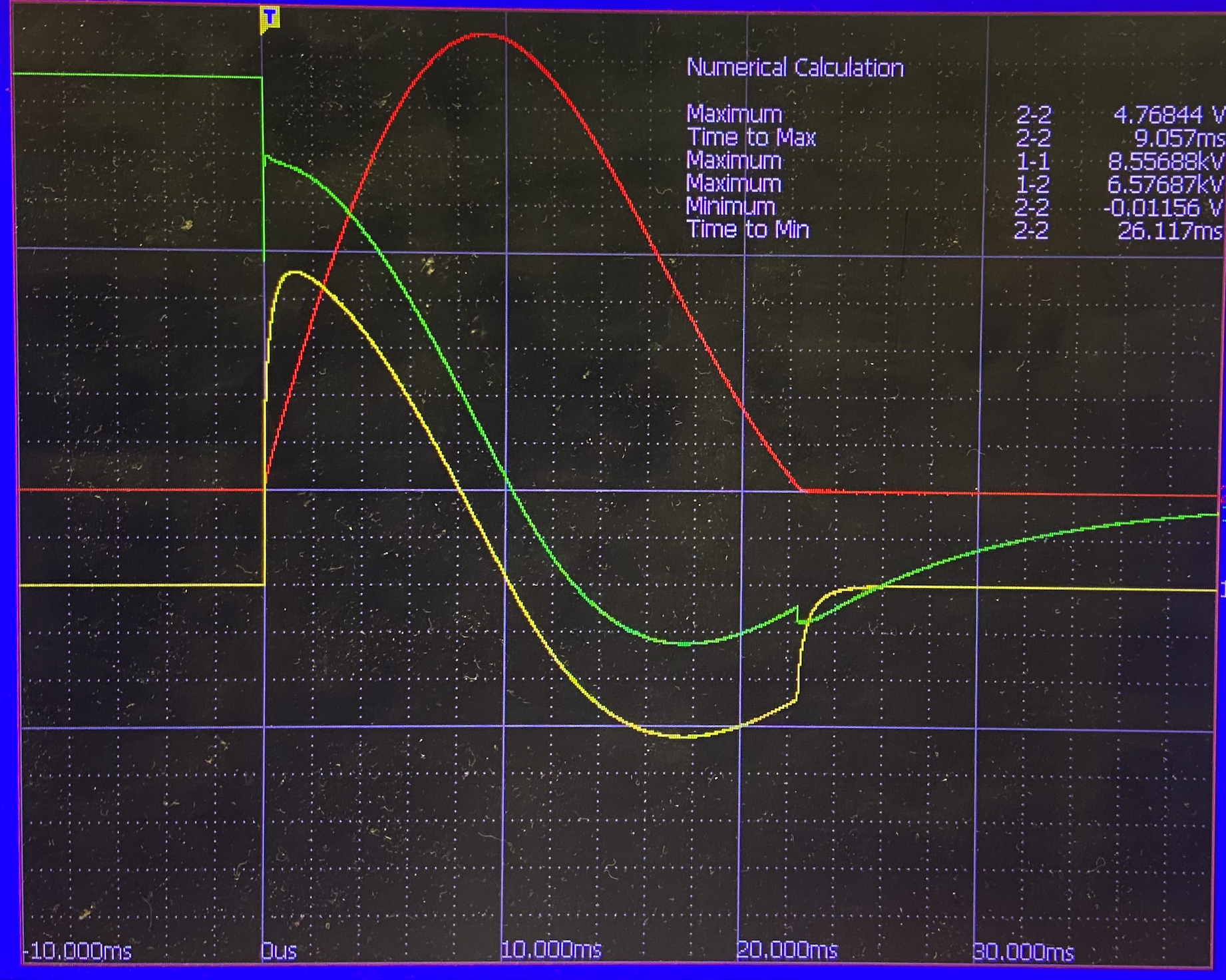
This is our first experiment involving a pulsed magnet, so we are trying to learn as much as possible from our experienced collaborators Fabienne Duc from the French National Center for High Magnetic Fields (LNCMI) and Cornelius Strohm from DESY. XMCD itself is a straightforward technique, but its combination with a pulsed solenoid… not so much. As our magnetic field pulses only last 22 milliseconds, the data acquisition has to be fast. ID24-ED (“Energy Dispersive”) therefore uses an old french invention: Instead of scanning the photon energy, a polychromator is used to irradiate the sample with a whole band of energies - each from a slightly different direction. This makes it possible to see a complete x-ray absorption spectrum on an area detector behind the sample, within one millisecond!
Sample preparation was quite a challenge. First, we used x-ray diffraction to align a few Nd2ZnIrO6 crystals and cut them into slices along the interesting directions. Next, these platelets had to be thinned down to less than 20 micrometres so they’d be x-ray transparent. Luckily, we were allowed to use a state-of-the-art crystal prep lab at the Ion-Beam Center of HZDR. Ph.D. Student Fabian Stier and M.Sc. Student Steven Gebel sacrificed some of their mental health for this, spending many long nights (/weeks/weekends) in Rossendorf, honing their crystal polishing skills. The hard work paid off and they were able to figure out the right recipe for Nd2ZnIrO6 - just in time for our experiment. In the end, the samples were so thin that they became transparent even to visible light.
For each 30-tesla pulse, we charge a 4 millifarad capacitor bank to 8.2 kilovolts - so the energy that is discharged is about 130 kilojoules. Considering the short pulse duration, our magnet is driven by around 8000 horsepower! After recording one x-ray absorption spectrum per millisecond throughout the 22-millisecond pulse, it takes about seven minutes for the coil to cool down again. So far, everything is going (surprisingly) smoothly and we have already recorded one reasonable field dependence of the Ir-magnetization. Fingers crossed!




